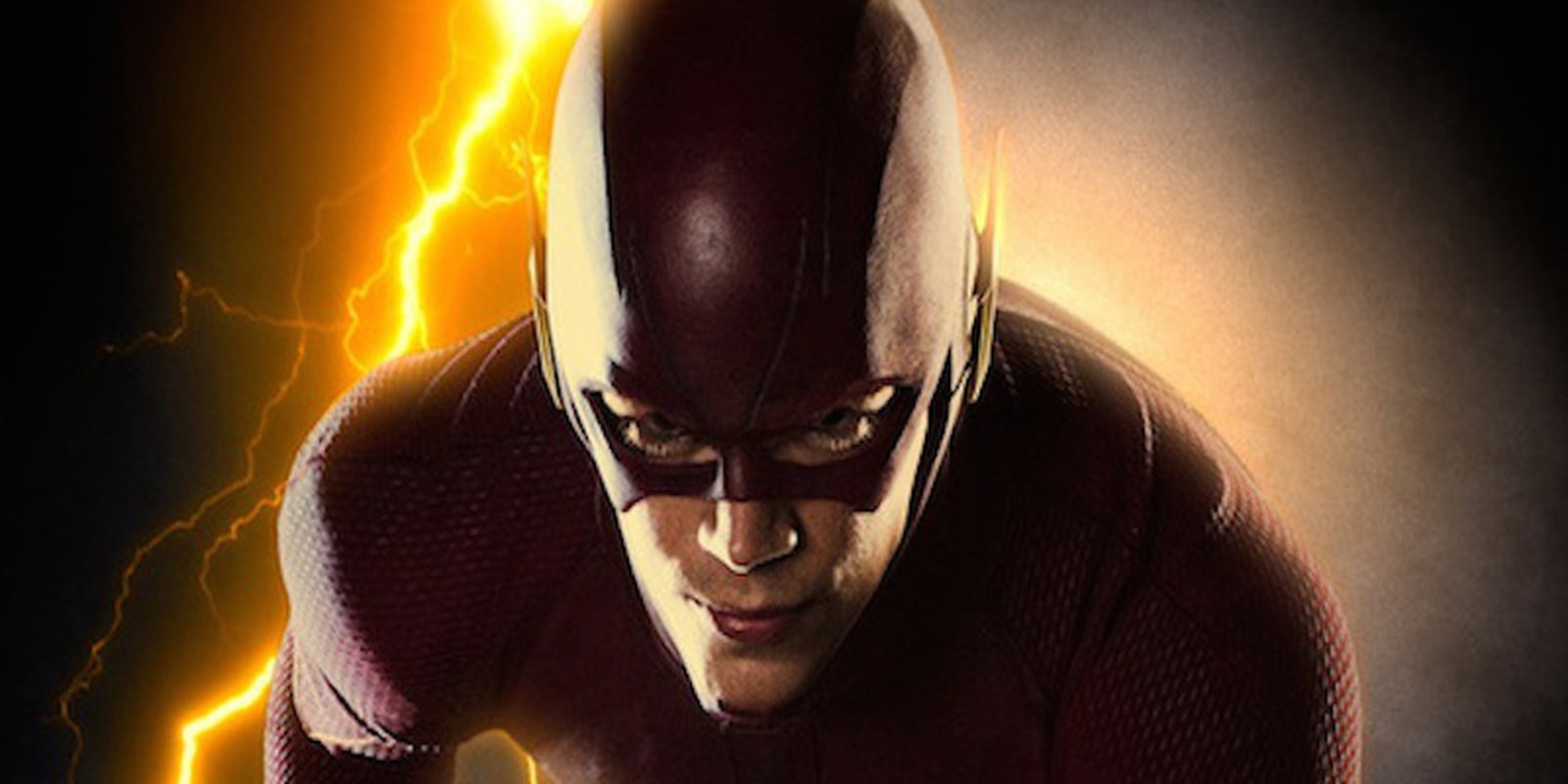America’s media landscape is at an interesting point in terms of LGBT representation. Over the last decade, we’ve seen queer gangsters, cowboys, and even a queer president appear in pop culture. So isn’t it time for a queer superhero?
We’ll get back to that, but first, recognition must be paid to Ezra Miller, who made history this week when it was announced he would be playing The Flash in Warner Brothers’ upcoming Justice League franchise, making him the first openly queer actor to be cast as a major superhero. Previously, Ian McKellan, Ellen Page, and Alan Cumming appeared in the X-Men series, but Miller’s status as an out queer actor playing one of DC Comics’ most recognizable heroes makes this a significant moment. Moreover, Miller will be getting his own film to star in, as opposed to just being a part of an ensemble, with a Flash movie currently set for a 2018 release.
Those who have seen Miller in films like We Need to Talk About Kevin, Afterschool, and The Perks of Being a Wallflower know that he is an excellent actor, and a great choice for the The Flash, regardless of his sexuality. However, no one is underselling the announcement of Miller’s casting either. Because in addition to being an exciting moment all on its own, this news gets us one step closer to the next step for the LGBT community and superheroes: putting a queer superhero onscreen.
The funny thing is, superheroes have always been pretty gay. Between the muscles, the tights, the sidekicks, and the flamboyant costumes, if someone pitched you the idea of a superhero, and you didn’t know what one was, you might accuse them of writing a gay stereotype. Moreover, a lot has been said over time about the parallels between the hidden identities and powers of groups like the X-Men, forced to hide from society because they’re different, and the gay community.
The seminal graphic novel Watchmen (adapted for the screen in 2009, with mixed results) also talked about queer superheroes, but more directly. In Watchmen, the kind of people who were attracted to the idea of being superheroes, who bought into the outfits and the secret identities and everything else, frequently had some kind of kink they couldn’t share with the world. And for several members, their inability to reveal their homosexuality helped bring them into the fold.
However, a lot has changed since the X-Men and the Watchmen came along. The allegories of the X-Men franchise aren’t as essential when gay people no longer need stand-ins to be part of a story; in 2014, they can stand in for themselves. Which means the fetishization of the idea of queer superheroes, à la Watchmen, isn’t really necessary either. In the world of Watchmen, being gay still made you an other. But today, a gay superhero should be able to seem as commonplace as a straight superhero. Ultimately, the issue comes down to recognizing a character’s queerness, while not letting it define them.
This is slowly starting to happen in comic books, so it’s only a matter of time before we see it happen onscreen, too. In the last few years, queer superheroes have made huge inroads in the Marvel and DC universes. Marvel’s first openly gay superhero, Northstar, recently got married, adding to the growing ranks of LGBT couples in the comic world.
In other instances, such as that of DC’s Batwoman, previously established straight characters have actually been reshaped as gay (this is only logical, assuming comic book writers have been paying attention to the Internet’s penchant for queer fandom). What makes this all the more appropriate, not to mention hilarious in Batwoman’s case, is that she was originally introduced to counter the homoerotic tension between Batman and Robin.
A similar route was taken with one of Batwoman’s lovers, Detective Renee Montoya, who ultimately took up mantle of The Question (thankfully, FOX’s Batman prequel, Gotham, appears to be keeping Montoya’s sexuality intact in their adaptation). And in 2012, DC even brought a queer version of the Green Lantern to its readers.
There has been a lot of other progress made for diversity in comic books lately as well. The organization Prism Comics supports LGBT writers and illustrators in the industry. First there was black Captain America and mixed race Spider-Man, and now, we’ve got a gender-bending Thor. Heck, Archie took a bullet for his gay best friend back in July.
Obviously though, there’s still a long way to go for queer superhero stories (and other queer comic book stories). A few have called out the new version of the Green Lantern as pandering. And NBC’s Constantine has already been criticized for apparently removing the character’s bisexuality. Then there’s the constant universe shifts that the comic book industry is known for, making a character’s sexuality hard to establish. This can allow for interesting developments, as was the case with Batwoman and The Question, but it can be problematic, too.
Looking at why there aren’t more gay superheroes, BuzzFeed’s Adam B. Vary noted, “If a writer were to launch a story arc that made Spider-Man, Batman, or Wonder Woman gay, they would inevitably become straight again—it’s just the way comics work. But ‘de-gaying’ an iconic superhero could be just as problematic as ‘gaying’ that superhero in the first place.”
But that’s still no reason to lose hope. Ten, even five years ago, the thought of an openly gay actor playing an iconic superhero in their own movie would’ve been unthinkable. Ezra Miller’s casting is not the end point for queer superheroes in Hollywood; it’s the beginning. There may not be a gay Spider-Man on the way yet, despite Andrew Garfield’s endorsement of the idea last year, but for the first time ever, the idea actually sounds plausible.
Superheroes exist to save us all. It’s only right that they reflect us all, too.


